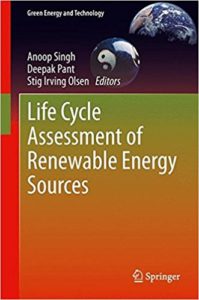Life Cycle Assessment of Renewable Energy Sources
Life Cycle Assessment of Renewable Energy Sources
Life Cycle Assessment of Renewable Energy Sources, sustainable and environment friendly energy sources in order to offset the dependence of mankind on conventional and non-Renewable Energy Sources of energy most of which are fossil based. However, the plethora of options available today makes it difficult for the users, policy makers as well as the researchers in this area to identify the right source for a specific situation as the usage and implementation depends on a variety of factors such as availability, ease of transportation, maintenance and end of-life options.
You can also Read Resilient Energy Systems Renewables Wind, Solar, Hydro
Life Cycle Assessment of Renewable Energy Sources tries to answer these questions based on the universally adopted method of Life Cycle Assessment (LCA). This book introduces the concept and importance of LCA in the framework of renewable energy sources and discusses the key issues in conducting their LCA. This is followed by an in-depth discussion of LCA for some of the most common bioenergy sources such as agricultural production systems for biogas and bioethanol, biogas from grass, biodiesel from palm oil, biodiesel from used cooking oil and animal fat, Jatropha biodiesel, lignocellulosic bioethanol, ethanol from cassava and sugarcane molasses, residential photovoltaic systems, wind energy, microalgal biodiesel, biohydrogen and biomethane. Through real examples
Life Cycle Assessment of Renewable Energy Sources Product details
- Series: Green Energy and Technology
![Renewable Energy Sources]()
- Hardcover: 293 pages
- Publisher: Springer; 2013 edition (September 3, 2013)
- Language: English
- ISBN-10: 1447153634
- ISBN-13: 978-1447153634
- Product Dimensions: 6.2 x 0.8 x 9 inches
- Shipping Weight: 1.2 pounds
Governments are setting challenging targets to increase the production of energy and transport fuel from sustainable sources. The emphasis is increasingly on renewable sources including wind, solar, geothermal, biomass based biofuel, photovoltaics or energy recovery from waste. What are the environmental consequences of adopting these other sources? How do these various sources compare to each other?


Comments are closed.